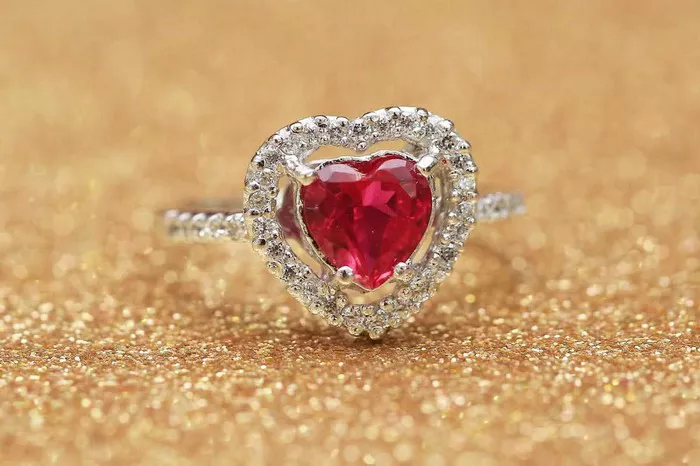Ruby, one of the most coveted gemstones, has long been admired for its vibrant red hue and its significance in various cultures. However, one question that often arises among both gem enthusiasts and potential buyers is: What is the ideal weight of a ruby stone? In this article, we will explore the factors that determine the ideal weight of a ruby, considering its aesthetic appeal, value, and usability in jewelry.
Understanding Ruby Weight: Carats and Measurements
Before diving into the ideal weight, it’s essential to understand how gemstones, including rubies, are measured. Gemstone weight is typically expressed in carats, where one carat equals 200 milligrams. Unlike diamonds, which have standardized weight-to-diameter ratios, rubies can vary significantly in size and shape. This variability means that two rubies of the same carat weight might look very different in size.
The Impact of Weight on Ruby Value
1. Carat Weight and Rarity
As with most gemstones, the value of a ruby increases with its carat weight. Larger rubies are rarer and, consequently, more expensive. For instance, a 5-carat ruby is significantly more valuable than five 1-carat rubies combined. This rarity factor plays a crucial role in determining the ideal weight of a ruby, especially for investment purposes.
2. Quality over Quantity
While weight is a critical factor, the quality of a ruby—its color, clarity, and cut—often has a more significant impact on its value than its carat weight alone. A smaller ruby with exceptional color and clarity can be more valuable than a larger, flawed stone. Therefore, when considering the ideal weight, one must also factor in the gemstone’s overall quality.
Ideal Ruby Weight for Different Uses
1. Ruby Rings
Rings are one of the most popular types of jewelry for rubies. For everyday wear, a ruby between 0.5 to 2 carats is often ideal. This weight range ensures that the ruby is noticeable without being overly large, which can make the ring uncomfortable or impractical for daily use. Additionally, rubies within this weight range are generally more affordable, making them accessible to a broader audience.
2. Ruby Pendants and Necklaces
Pendants and necklaces can accommodate larger rubies, often ranging from 1 to 5 carats or more. The ideal weight for a ruby in a pendant depends on the design and the wearer’s preference. Larger rubies are often used in statement pieces, where the gemstone serves as the focal point. However, smaller, high-quality rubies can also create elegant and delicate necklaces.
3. Ruby Earrings
For earrings, the ideal weight of rubies typically falls between 0.25 to 2 carats each, depending on the design. Smaller rubies are perfect for studs or delicate drop earrings, while larger stones can be used in more elaborate designs. Balance and symmetry are crucial in earrings, so matched pairs of rubies are often more expensive.
See Also: Can You Scratch a Lab-Created Ruby?
Factors Influencing the Ideal Weight
1. Personal Preference and Style
Ultimately, the ideal weight of a ruby is subjective and varies based on personal preference and style. Some individuals prefer large, bold gemstones that make a statement, while others may opt for smaller, more understated stones. Understanding the wearer’s style and preferences is key to determining the ideal ruby weight for a specific piece of jewelry.
2. Practical Considerations
Practicality also plays a role in determining the ideal weight of a ruby. Larger rubies, while stunning, can be heavy and cumbersome in certain types of jewelry, such as rings or bracelets. Ensuring that the ruby is comfortable to wear and suits the intended use is essential.
Evaluating Ruby Quality: Beyond Carat Weight
1. Color
The color of a ruby is one of the most critical factors in its evaluation. The ideal ruby exhibits a vibrant, intense red color, often referred to as “pigeon blood” red. This hue is highly sought after and can significantly enhance the value of the ruby, regardless of its carat weight.
2. Clarity
Clarity refers to the presence of inclusions or internal flaws within the ruby. While inclusions are common in natural rubies, fewer and less visible inclusions typically result in a higher quality stone. In some cases, inclusions can enhance the ruby’s uniqueness and character.
3. Cut
The cut of a ruby affects its brilliance and overall appearance. A well-cut ruby reflects light beautifully, enhancing its color and making it more visually appealing. The ideal cut maximizes the ruby’s potential, regardless of its carat weight.
Market Trends and Investment Potential
1. Demand for Larger Rubies
In recent years, there has been a growing demand for larger rubies, particularly among collectors and investors. This trend has driven up the prices of high-quality rubies over 5 carats. However, the ideal weight for investment purposes depends on the individual investor’s goals and budget.
2. The Appeal of Smaller, High-Quality Rubies
While large rubies are highly prized, smaller, high-quality rubies continue to be popular, especially in fine jewelry. These stones offer a balance of beauty, affordability, and practicality, making them an ideal choice for many buyers.
Conclusion
Determining the ideal weight of a ruby stone involves a combination of factors, including personal preference, intended use, quality, and budget. While larger rubies are rarer and often more valuable, smaller, high-quality stones can be equally stunning and practical. Understanding the nuances of ruby evaluation—color, clarity, and cut—alongside carat weight ensures that you choose the perfect ruby for your needs, whether for personal enjoyment or investment.
By considering these factors and staying informed about market trends, you can make a well-reasoned and satisfying choice, ultimately finding the ideal ruby that meets your expectations and desires.


